Key takeaways:
- A marketing calendar is essential for organizing promotional activities and aligning campaigns with key dates and trends.
- Setting SMART goals (Specific, Measurable, Achievable, Relevant, Time-bound) drives focused and impactful marketing initiatives.
- Regularly reviewing campaign performance fosters adaptability and innovation, allowing for timely adjustments to strategies.
- Understanding seasonal trends and audience preferences is crucial for successful marketing and maximizing engagement.
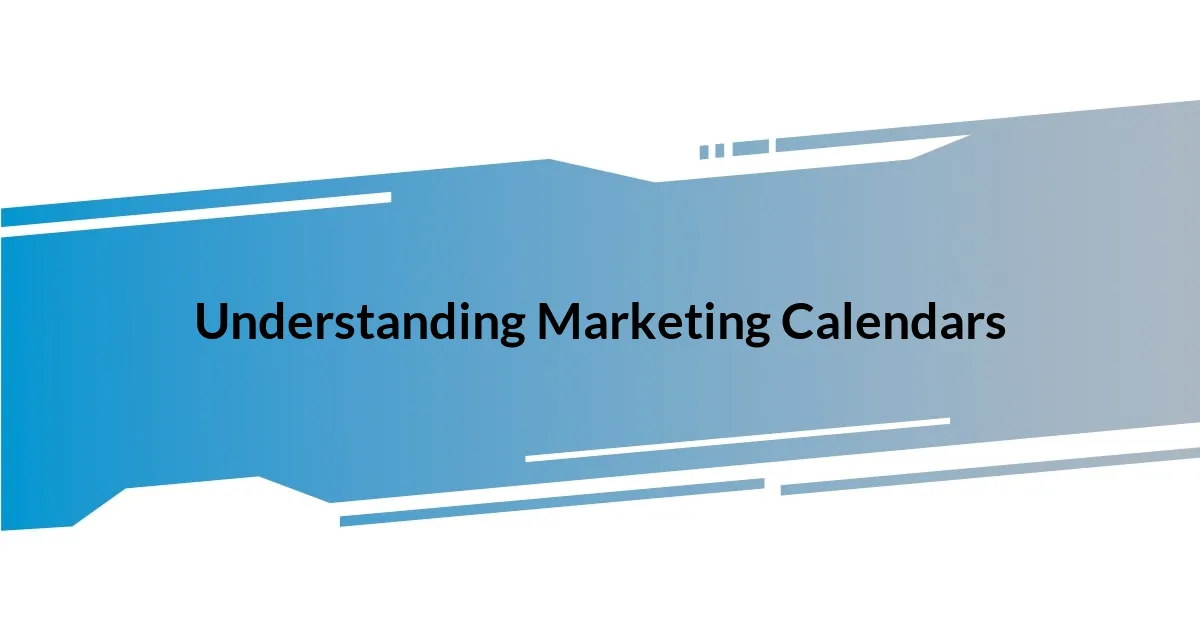
Understanding Marketing Calendars
A marketing calendar is more than just a schedule; it’s a strategic tool that lays out your promotional activities over a specific period. I remember the first time I created one; I felt a surge of clarity as I mapped out campaigns alongside major holidays and events. Have you ever tried to juggle multiple marketing initiatives at once? It can be overwhelming without a visual guide.
Understanding the flow of your marketing year can transform how you approach your campaigns. For instance, when I align product launches with seasonal trends, I see a noticeable uptick in engagement. It’s fascinating how timing can play a pivotal role in a campaign’s success, isn’t it?
Incorporating key dates like product launches, promotional events, or seasonal campaigns helps keep your team organized and focused. I’ve found that when everyone is on the same page, it fosters collaboration and creativity. How do you feel about working in a structured framework? For me, it opens up more room for innovation rather than chaos.

Defining Your Marketing Goals
Defining your marketing goals is an essential step before diving into your calendar. I always start by asking myself what I truly want to achieve. For instance, a few years ago, I aimed to increase sales by 25% within six months. This specific target helped me shape my initiatives, making it clear where to focus my efforts.
When defining your goals, it’s vital to ensure they are SMART: Specific, Measurable, Achievable, Relevant, and Time-bound. I once set a vague goal to “engage more customers” but later realized it didn’t drive my planning. After switching to a SMART goal like “boost social media engagement by 40% in three months,” I found that my content became more targeted and impactful.
Finally, don’t forget the emotional aspect of your goals. Connecting with your audience on a personal level can amplify your reach and resonance. I recall launching a campaign that shared real customer stories, which not only met our engagement goals but also fostered a community feeling. It reminded me that marketing is not just about numbers; it’s about building relationships that last.
| Goal Type | Description |
|---|---|
| Sales Goals | Increase revenue or sales metrics |
| Engagement Goals | Boost interaction with customers on various platforms |
| Brand Awareness Goals | Enhance visibility and recognition in the market |

Selecting Key Marketing Channels
Selecting the right marketing channels is crucial for maximizing your outreach, and it often starts with understanding your audience. I vividly recall a moment when I decided to focus on social media platforms. Initially, I tried to spread my efforts across every channel I could think of, but it felt like shouting into a void. Then, I honed in on the platforms where my target audience spent their time, and the shift was remarkable.
Here are key aspects to consider when selecting your marketing channels:
- Audience Demographics: Identify where your target audience hangs out online.
- Content Type: Choose channels that align with the format of your content, be it video, images, or articles.
- Budget Considerations: Assess the financial investment required for each channel.
- Channel Performance: Analyze past campaign data to see which channels provided the best return on investment.
In my experience, testing various channels is essential. I once launched a campaign on a new email platform but didn’t see the engagement I expected. Instead of getting discouraged, I tried a different approach by incorporating more visual content and personal stories, which sparked interest and engagement. This process of discovery can feel like navigating a labyrinth, but each misstep brings new insights, eventually leading to success.
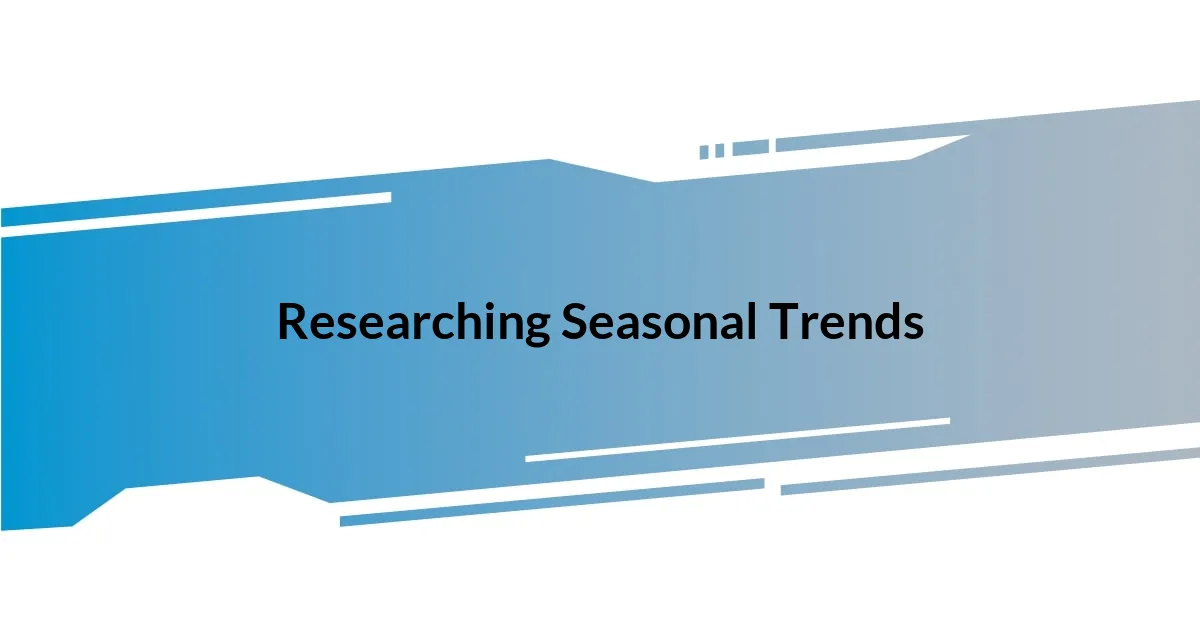
Researching Seasonal Trends
Researching seasonal trends has always been a fascinating part of my marketing journey. I remember the excitement I felt when I discovered how consumer behavior shifts with the seasons. For instance, I learned that certain products naturally gain traction during holidays or specific weather patterns. It prompted me to analyze my sales data and align my marketing strategies with these patterns—what if I could ride the wave of seasonal interest instead of playing catch-up?
I typically start my research by examining industry reports and consumer behavior studies. These resources offer a wealth of insights, especially about peak buying times. One year, I noticed a spike in inquiries related to outdoor gear as spring approached. By scheduling promotions during this period, I capitalized on the enthusiasm of spring adventurers. I often ask myself: what are the key seasons that resonate with my audience? Recognizing these opportunities is not merely about timing but also about understanding the emotional context behind seasonal trends.
During my exploration, I’ve also leaned into social media trends and notifications from platforms like Google Trends. Watching how topics emerge and fade can help me predict when to launch campaigns. I remember a Christmas campaign I launched after noticing an uptick in searches for gift ideas weeks before December. Instead of waiting, I jumped in early. The response was stunning! It reinforced my belief in staying ahead of the curve—after all, wouldn’t you want to be the first choice for your audience when they start thinking about their holiday shopping?
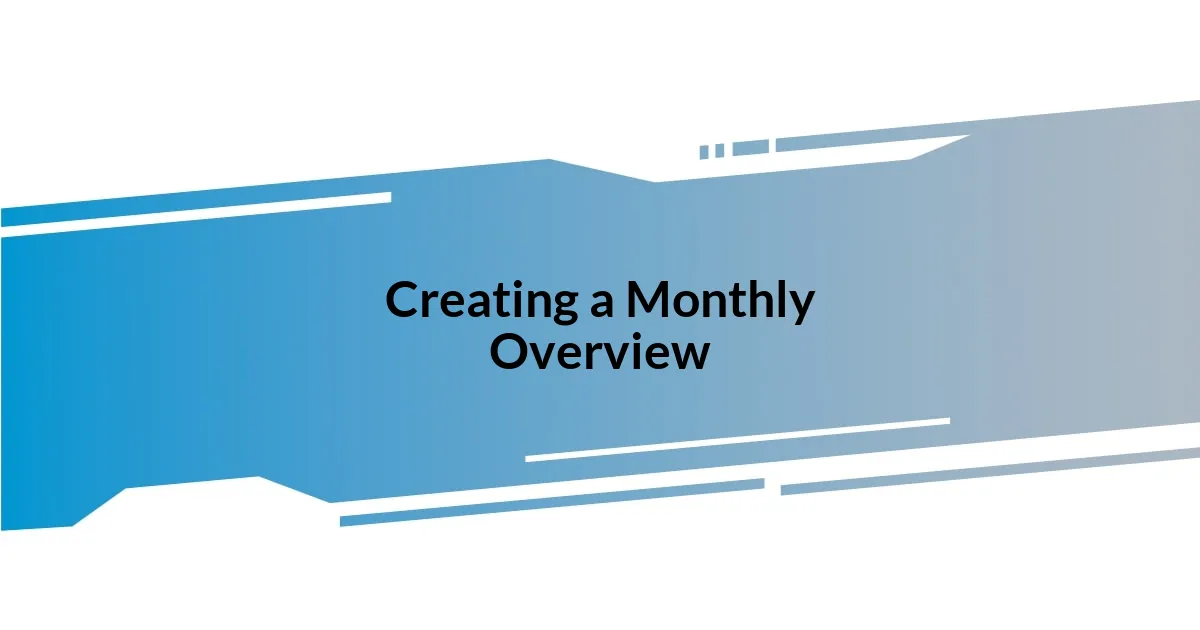
Creating a Monthly Overview
Creating a monthly overview is like setting the stage for a theatrical performance. When I first tackled this part of my marketing calendar, I felt overwhelmed with all the tasks ahead. However, breaking down the month into weekly themes made everything more manageable. I found it helpful to visualize my goals on a monthly calendar, allowing me to see how different campaigns and promotions could align over time.
I often ask myself: how do my marketing objectives connect with the rhythm of my business? For instance, I remember a month where I centered my marketing around a new product launch, strategically planning content leading up to release day. This not only generated excitement but also allowed me to gauge consumer interest in real-time. The process of mapping everything out gave me clarity, and I’ve never looked back since.
As I lay out the monthly overview, I also leave room for spontaneity. This reminds me of a time when I launched an impromptu social media challenge halfway through a month. What started as a simple idea captured my audience’s attention and enhanced engagement. I learned that flexibility in my planning can be just as valuable as meticulous detail, leading me to embrace new opportunities as they arise.
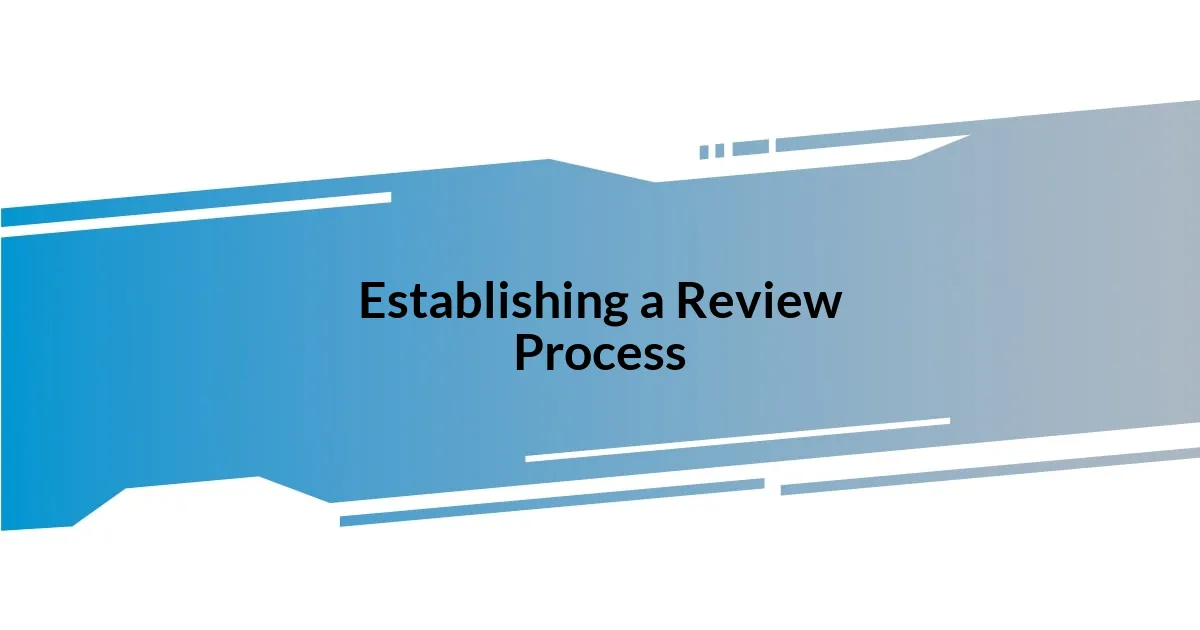
Establishing a Review Process
Establishing a review process is an essential part of refining my marketing calendar. I’ve found that scheduling regular check-ins keeps me aligned with my goals and responsive to changes. There have been times when my initial strategies didn’t resonate as expected, leading me to reassess and pivot quickly. What good is a plan if you don’t take time to measure its impact?
When I first implemented a structured review system, I was surprised by how much I could gain from it. I like to set aside time at the end of each month to analyze what worked and what didn’t. I remember the first time I noticed a campaign falling flat; instead of letting it slide, I dove deep into the analytics. Understanding audience engagement patterns revealed critical insights that I applied to future campaigns. Isn’t it incredible how a simple review can unveil opportunities for growth?
In my experience, incorporating feedback loops into the process allows for continual improvement. I’ve made it a habit to reach out to my team for input during these reviews. Not only does it foster collaboration, but it often sparks new ideas that I hadn’t considered. I once integrated a suggestion from a teammate that led to a record-breaking webinar turnout. It’s moments like these that remind me: the review process isn’t just about numbers; it’s about cultivating a culture of innovation and teamwork.
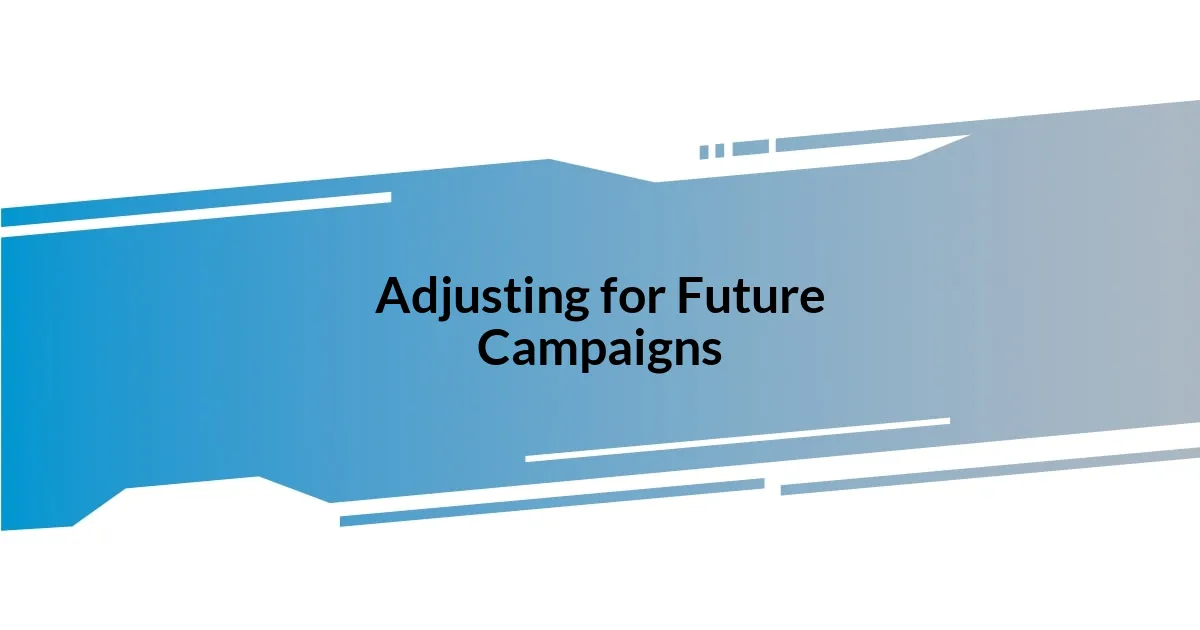
Adjusting for Future Campaigns
Adjusting for future campaigns is an ongoing journey that has taught me the importance of adaptability. There was a season when my planned campaign didn’t grab attention as I’d hoped. It stung a little, but it pushed me to revisit my approach. I learned to analyze not just the data but also to listen to the pulse of my audience, which ultimately led me to refine my messaging for future efforts.
One particular instance stands out to me. I remember sitting down after a disappointing campaign performance and asking myself: what do I really want my audience to feel? This reflection prompted me to shift from a purely promotional tone to a more storytelling-driven approach in my subsequent campaigns. The result? A profound connection formed with my audience, evidenced by higher engagement rates and genuine comments. Isn’t it fascinating how a simple question can reshape your strategy?
As I look ahead, I always reserve time during my planning sessions to brainstorm adjustments based on what I’ve learned. I recall a time I stumbled upon a trending topic in my industry right before launching a campaign. Instead of sticking to my original plan, I adapted the messaging to tie into that trend. The response was overwhelmingly positive! It reminded me that while structured planning is important, the ability to pivot and seize the moment can yield the most rewarding outcomes. What opportunities for growth are you overlooking in your current campaigns?